As NASA sets a course for Mars and a return to the moon, and private companies engage in a new space race, textile companies navigate the aerospace market with high-performance fabrics and products designed for the next frontier.
by Amy Goetzman
When does a single lemon cost $2,000? When it’s in space. NASA reports that it costs about $10,000 in fuel to launch one pound of payload into space—whether that payload is people, equipment or supplies. That means the lemons astronaut Scott Kelly famously juggled on the International Space Station during his 2015−16 year in space were valued at about $2,000 each.
Approaching it that way, it’s easy to see why supremely lightweight and strong textiles play a critical role in aerospace activities.
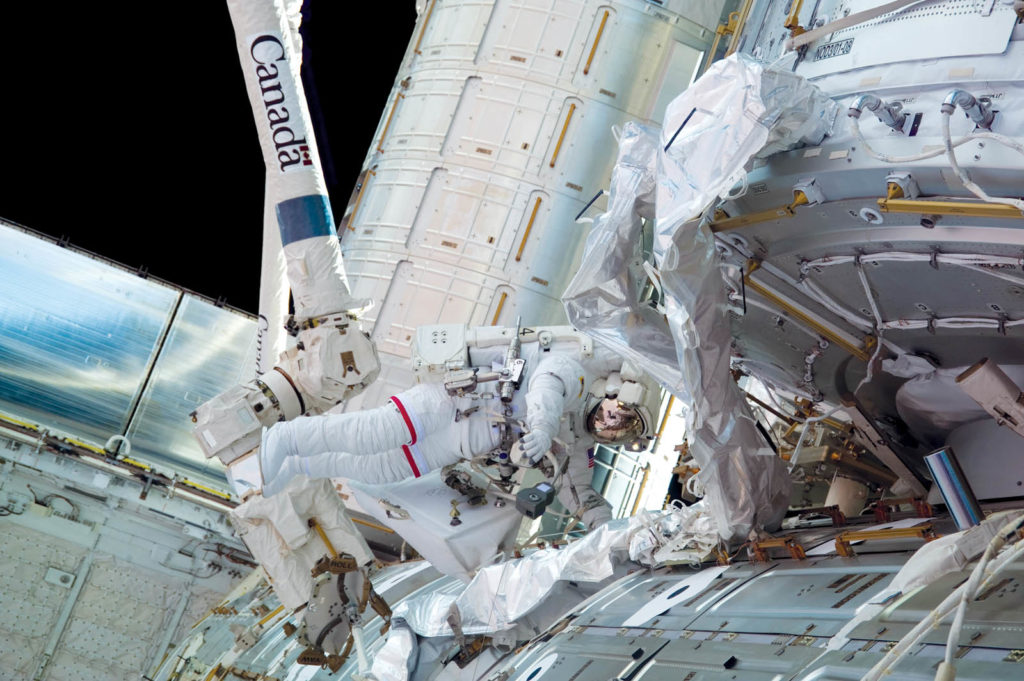
A wide range of entities utilize fabric technologies in their aerospace equipment, including NASA, military organizations, airline and aerospace companies, universities and research institutions, weather and science programs, and Google and datacom companies. And the growing private space exploration industry, spurred by initiatives including Elon Musk’s Space X, Jeff Bezos’s Blue Origin and Richard Branson’s Virgin Galactic, promises to make space travel accessible to (well-heeled) individuals who aren’t trained as astronauts. The space economy is here, with opportunities for companies in the specialty fabrics industry that can meet the requirements of extreme environments beyond the clouds.
Out-of-this-world fabrics
The people who make space fabrics saw this coming. Composite Fabrics of America (CFA), Taylorsville, N.C., a subsidiary of the century-old weaving company Schneider Mills, has seen steadily increasing demand for its carbon fiber textiles, particularly Textral™, a multidimensional carbon fiber weave. The company also produces custom fabrics and tapes using carbon, aramid, basalt, Innegra™, fiberglass and polyethylene fibers, available in unidirectional, bidirectional and hybrid weaves. CFA is certified to AS9100 Rev D., the international management system standard for the Aircraft, Space and Defense (AS&D) industry, as well as ISO9001.
“Carbon fiber is very strong and durable. It starts as a textile, but when it’s encapsulated in a resin and cured, it holds a shape, yet it is very lightweight. That makes it an excellent solution for aerospace use,” says David Shippee, CFA executive director of sales. “We have perfected how to weave fibers to create high-tech fabrics, which perform well for our space customers. We can produce fabrics that have structural integrity, resist temperature changes, are strong and durable—basically, they are lighter, stronger, better. They save on fuel and deliver very high performance.”
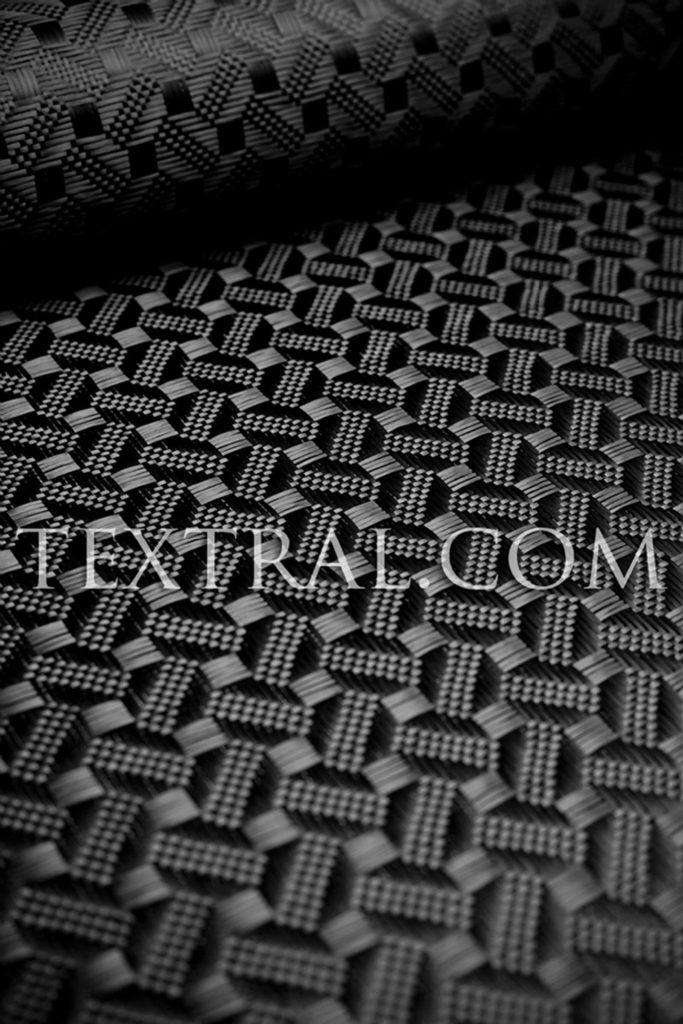
The company works closely with customers to develop textiles that suit their design and performance requirements. While CFA’s products have been perfected for use in space, many specialty Earth-bound companies find these high-performance materials work well on the ground. “Some customers require technical fabrics for applications such as boats, extended solar arrays, barrier systems, vehicles, aircraft seat frames or sporting equipment,” says Shippee, noting that many luxury and racing automobiles are integrating carbon fiber fabric into their designs. On Earth, carbon provides the same fuel savings and durability it demonstrates in space.
“In many applications, if it’s made from plastic, it can be made better with carbon fiber fabrics,” he says.
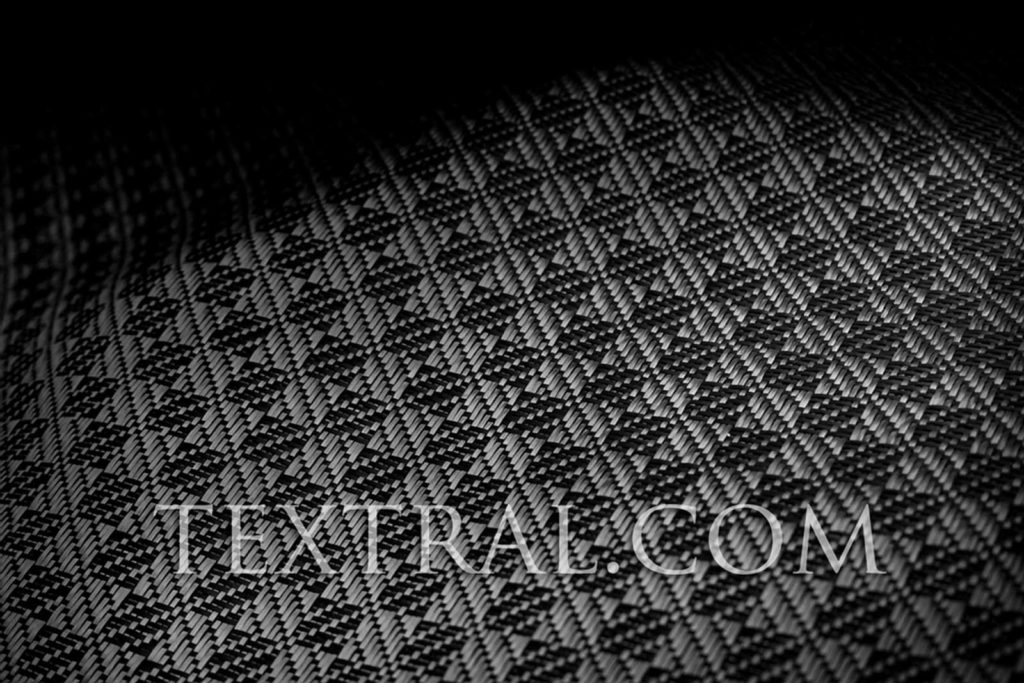
Suit up and wrap up
The fabrics produced by CFA and other specialty fabric suppliers that innovate for space end up in a wide range of products. But perhaps none are as exciting as space suits. David Clark Co., based in Worcester, Mass., is a pioneer in the field, partnering with the Mayo Clinic in the 1940s to develop anti-G suits to protect Allied pilots from blacking out during high-G maneuvers.
“Some of David Clark’s early prototypes leveraged his ‘straightaway garment,’ which was essentially the Spanx® of the day,” says Shane Jacobs, softgoods design manager, Aerospace Life Support Systems, David Clark Co. Post-war, the company continued to refine its suit designs for rocket plane test pilots. As the space race ignited, this expertise turned to multilayer full-pressure suit construction.
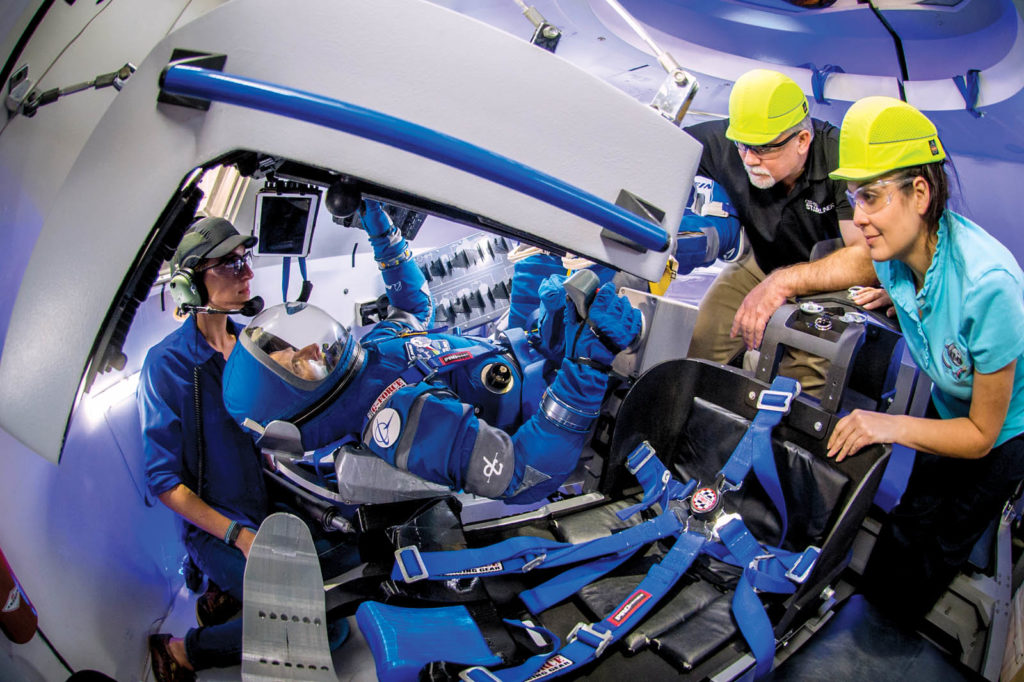
“We’ve been involved in every human space and high-altitude program since Gemini, including the Apollo Block 1 suits, the space shuttle program suits and the suits in development now for the Boeing CST-100 Starliner [Boeing’s next-generation space capsule that will take people to and from low-Earth orbit],” Jacobs says. “Every suit we design is a little different. Requirements vary for suborbital versus orbital missions; the user might be suited for the duration of the flight or just for the launch. Some suits are lightweight and minimal complexity, such as the suit designed for the Starliner. Others are for longer duration missions to deep space, such as the suits for NASA’s Orion spacecraft. Those integrate complex systems, such as a feeding port, waste management and liquid cooling system. A consistent focus is always to design each suit to be low bulk, highly mobile and comfortable.”
Pattern designers and engineers test suit components via CAD modeling and prototyping before manufacturing, Jacobs says. Suits are tested in a variety of environments, including underwater to simulate microgravity.
“Inside the suit, you are essentially in your own personal spacecraft,” he says. “It needs to be airtight yet selectively permeable to allow water vapor to escape. Other requirements are fire retardancy and high strength. We use low-elongation fabrics that will hold their shape while allowing people to move. You have to design the suit from the inside and understand what the user is feeling. If the suit isn’t optimally sized or is designed improperly, it can be pretty painful when it is pressurized.”
Naturally, he’s tried one on, although Jacobs hasn’t yet gone into orbit himself. But he says the company has a close eye on efforts to get consumers into space, and he hopes to someday join them. In the meantime, the technologies the company has innovated for space are finding a role in applications on Earth, such as Reebok’s Floatride Run Fast shoes, which evolved from a space boot design the company developed.
Less glamorous than space suits, but no less critical are Multi-Layer Insulation (MLI) Blankets, such as those designed by Aerospace Fabrication & Materials LLC, Farmington, Minn. Made from a thin plastic film material just 0.00025 to 0.00033 inches (6 to 8 microns) thick and low conducting fabric spacers, these engineered thermal control blankets are used to insulate critical equipment in the Space Shuttle Orbiter, the International Space Station, geospatial satellites, datacom satellites and cryogenic applications.
“Think about it the way you’d look at insulation for your house; these blankets serve as a passive thermal control device for spacecraft,” says Brent Anderson, owner of Aerospace Fabrication. “They help protect and maintain instruments at room temperature inside.” In keeping with the critical need to keep weight down in aerospace products, the blankets feature an alternating layer construction. “They are extremely lightweight. The internal layers are a loose-weave, almost bridal veil type fabric and metalized plastic film. Even though we use up to 20 layers, it only weighs a couple of ounces per square foot. On the outside, the material is coated with metals. That shiny surface reflects incoming thermal radiation off the surface.”
Anderson’s company is always looking for new materials or combinations of fibers, he says. In addition to weight, low conductivity and optical properties, the textiles used in these applications must endure the harsh environment of space. “We end up going out often to talk with the fabric industry to see what is new,” Anderson says. “For instance, 3D weaving is really taking off. We are watching that to see how we might incorporate it into our products.”
Even as space applications increase, the company faces a challenge that many manufacturers in the aerospace market experience: relatively small demand. To keep a steady bottom line, the company also produces technical tapes and printed circuits and cables for the electronics industry. “We want specialized materials that do extraordinary things, but we don’t tend to buy a lot of any one thing, so the price goes up for us,” Anderson says. “It doesn’t tend to be something most suppliers want to support, because the business ebbs and flows so much. Even as the need for space textiles increases, it’s still a small market compared to others.”
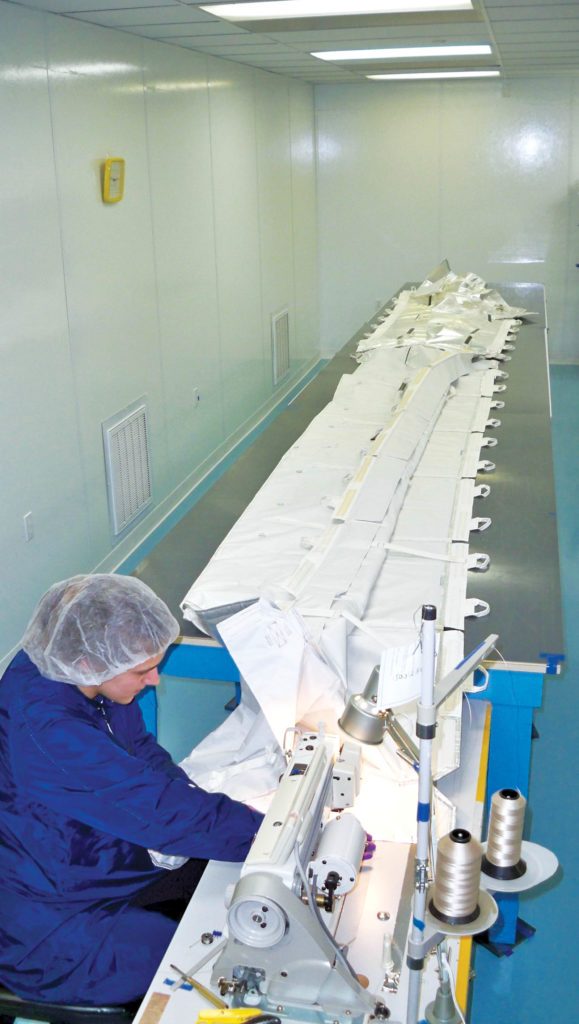
Closer to home
Not all aerospace textiles make it to outer space. The stratosphere, the second layer of the Earth’s atmosphere in the zone above the clouds, is becoming increasingly crowded with specialty high-tech balloons and airships. Textile-based applications are ideal for this zone, which is characterized by thin air, limited weather events, exposure to the ozone layer and high levels of ultraviolet radiation from the sun. Raven Aerostar, Sioux Falls, S.D., has been innovating high-altitude textiles and stratospheric balloons since the 1950s.
“These are products that will fly two to five times as high as airplanes, so we need to make sure they meet extremely high quality standards,” says Joe Beck, Raven Aerostar plant manager and program manager. “The materials and the construction must be very robust to endure the external conditions, which can range in temperature from -50°C to -90°C [-60°F to -130°F]. These are typically filled with helium, so impermeability is a critical factor as well.”
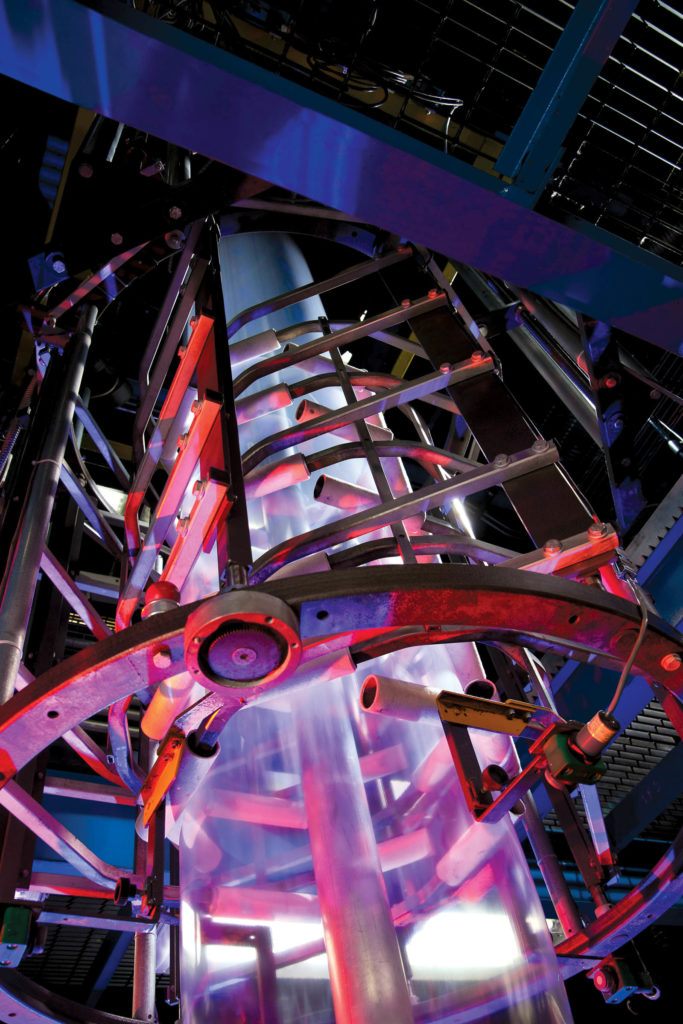
Composed of “lighter-than-air” engineered polymer-based films, Raven Aerostar’s stratospheric balloons look as delicate as a butterfly, but they can carry payloads up to four tons, collect information used in scientific research, perform military surveillance and assist in GPS, radar and remote communications endeavors. As a division of Raven Industries, Raven Aerostar works closely with Raven Engineered Films, the division that develops the specialty polymer film and sheeting used in these applications.
“We have our material design expertise right next door, so it’s easy to develop new materials for specific customer needs,” Beck says. “Our goal is always thinner, lighter and stronger.”
The emerging space economy will also create demand for textile products that never depart Earth. Take the work of SLO Sail and Canvas of San Luis Obispo, Calif. The company specializes in marine fabrication, but military and aerospace organizations—including Space X, California Polytechnic State University, the Nixus Project Glider and drone operators—have taken advantage of its design and fabrication know-how.
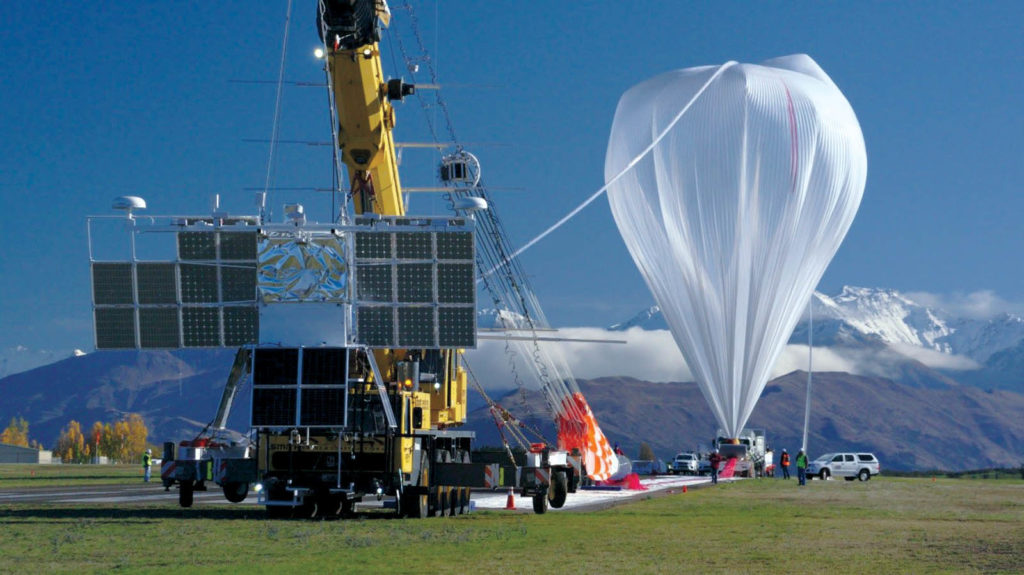
Applying its expertise in flexible yet taut marine products, the company has taken on projects such as crash nets for drones and specialty tarps that are installed around missiles and rockets on the launch pad or during construction, says Karl Deardorff, SLO owner. The tarps are made from anti-static fabric, a critical requirement in an environment where a rocket booster might be sitting on 100,000 pounds of rocket fuel. Some jobs might need specific qualities, such as polyester, carbon or conductive threads.
“The point is to protect people and equipment from FOD—foreign object debris,” Deardorff says. “A rocket that’s 230 feet high can have six to eight levels of scaffolding, and if something falls, that’s a problem. An anti-FOD tarp may only be 6 to 9 inches wide, but that is enough to avert damage or loss.”
Between NASA’s short and long-range goals, a new space race between deep-pocketed private companies, and the advantages of high-tech textiles in space exploration, the aerospace market presents great potential for specialty fabric suppliers, designers and manufacturers that are looking to make their mark in extreme applications.
“This is a growing area with lots of opportunity,” Deardorff says. “There is a lot of work for us all. We enjoy working closely with our customers on these unique projects, and we enjoy the excitement of designing for an industry with such big ambitions.”
Amy Goetzman is a freelance writer based in Maplewood, Minn.
Like many companies that work in highly specialized fields, Raven Aerostar sees a big challenge in finding the right experts for its workforce.
“We have a great team of product designers and developers, engineers, scientists and manufacturing experts, but it can be hard to find talent with the right experience, so we have a training program that enables us to develop in-house manufacturing expertise,” says Joe Beck, Raven Aerostar plant manager and program manager. Beck predicts continued growth in the aerospace market as more industries find ways to populate the stratosphere. Developing talent will be critical to meet the needs of that market.
“You talk about textiles, and at first glance it doesn’t seem that sexy, but when you dig deeper and see the range of things we’re involved with, it’s pretty exciting,” Beck says.
 TEXTILES.ORG
TEXTILES.ORG



